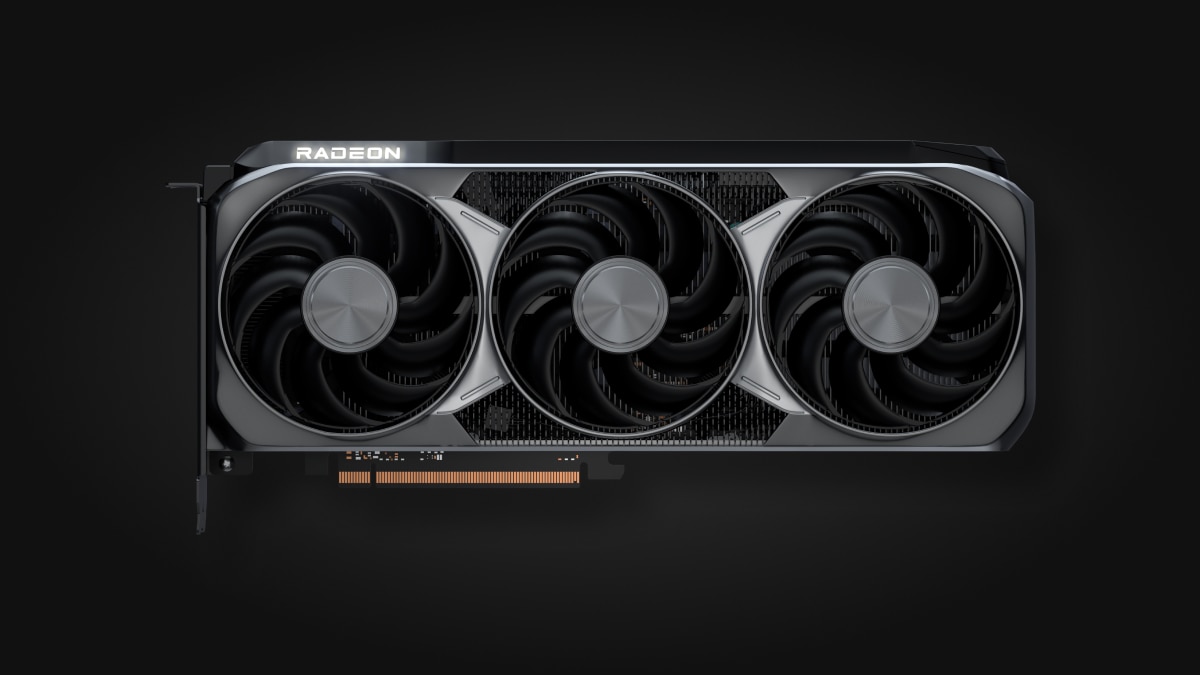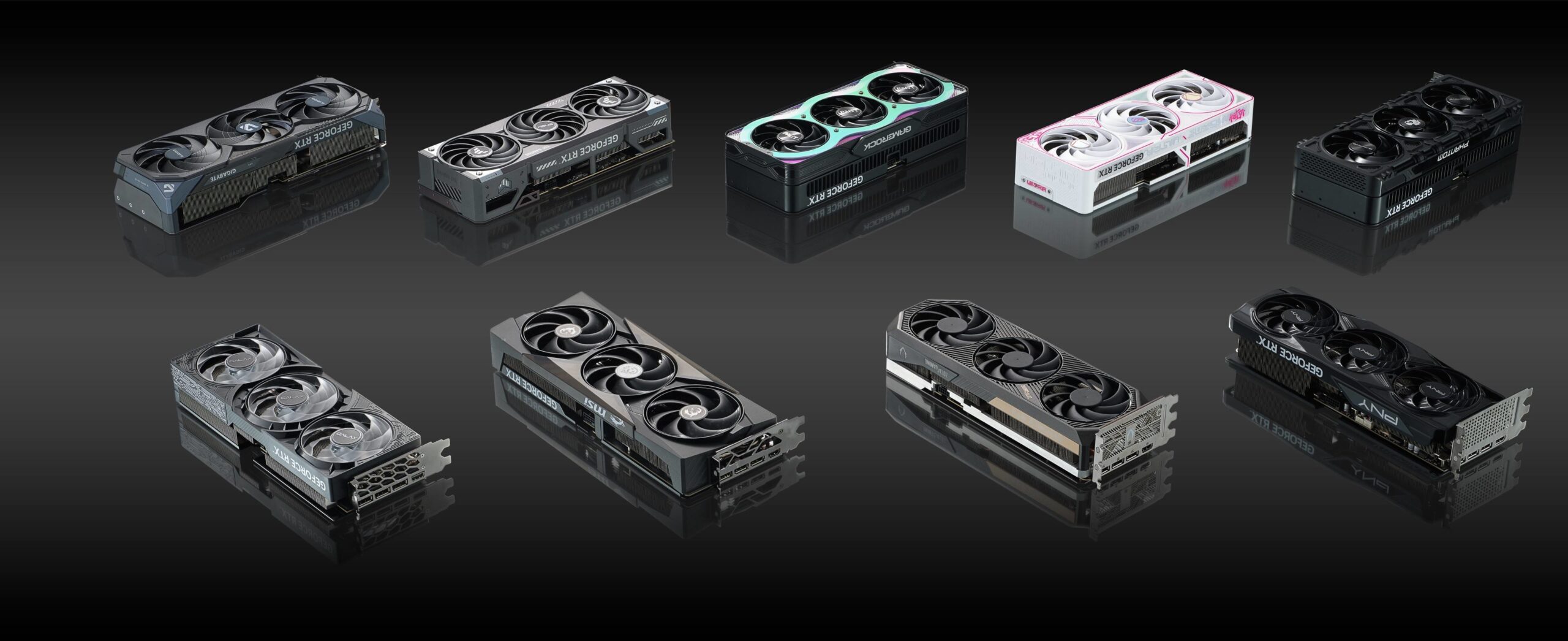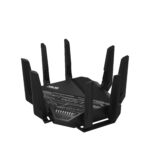The battle between AMD and NVIDIA has entered a fierce new chapter in 2025 with the release of the Radeon RX 9070 XT and the GeForce RTX 5070 Ti. These GPUs don’t just fight for frame rates — they represent two very different philosophies in how modern gaming performance, features, and pricing should balance.
AMD leans into aggressive value and raw raster performance, while NVIDIA pushes premium features, leading-edge ray tracing, and AI-driven enhancements.

Below is a comprehensive comparison table for quick reference:
| Feature | AMD Radeon RX 9070 XT | NVIDIA GeForce RTX 5070 Ti |
|---|---|---|
| Architecture | RDNA 4 | Blackwell |
| GPU Core | Navi 48 | GB203 |
| Stream Processors/CUDA Cores | 4096 | 8960 |
| Ray Accelerators/RT Cores | 64 | 70 |
| AI/Tensor Cores | 128 | 280 |
| Memory | 16GB GDDR6 | 16GB GDDR7 |
| Memory Bus | 256-bit | 256-bit |
| Memory Bandwidth | 640 GB/s | 896 GB/s |
| TDP/TGP | 304W | 300W |
| MSRP | $599 | $749 |
| Release Date | March 6, 2025 | February 20, 2025 |
Real-World Performance: Rasterization vs Ray Tracing

In traditional rasterized gaming — where ray tracing is not enabled — the RX 9070 XT holds its own and often narrows the gap to within 5% of the 5070 Ti across most titles. In AMD-optimized games like Call of Duty: Black Ops 6 and Forza Horizon 5, the RX 9070 XT can even outperform the RTX 5070 Ti, thanks to architectural enhancements in RDNA 4.
However, when ray tracing enters the mix, NVIDIA once again takes a commanding lead. In benchmarks for Cyberpunk 2077, Alan Wake II, and Black Myth: Wukong, the 5070 Ti delivers up to 70–80% higher frame rates at 4K with full RT effects enabled — a testament to the ongoing advantage of NVIDIA’s ray tracing maturity and hardware investment.

AI Features & Upscaling: DLSS 4 vs FSR 4
- RTX 5070 Ti: Features DLSS 4 with Multi-Frame Generation, delivering a smooth and detailed visual experience even in heavy workloads. DLSS continues to be a crown jewel for NVIDIA, especially in newer games that natively support the latest version.
- RX 9070 XT: Ships with support for FSR 3 and preliminary support for FSR 4, which now uses AI acceleration for improved quality. While it has come a long way, FSR still lags behind DLSS in edge sharpness, motion clarity, and temporal stability.
For creative professionals or gamers using AI-enhanced tools, NVIDIA’s broader CUDA and AI software ecosystem also gives the 5070 Ti an edge in non-gaming workloads like video rendering, AI image generation, and real-time streaming enhancements.
Price vs Value: Does Cheaper Mean Better?
AMD’s RX 9070 XT comes in at a very aggressive $599 MSRP — $150 less than the RTX 5070 Ti. While the NVIDIA card holds an edge in certain technologies, AMD’s offering is more than capable of delivering excellent performance in the majority of current games, especially at 1440p ultra and 4K high settings.
In pure performance-per-dollar calculations:
- Rasterization (Cost-Efficiency Winner): RX 9070 XT
- Feature Set (Premium Experience): RTX 5070 Ti
Do note that due to market fluctuations, both GPUs may be listed above MSRP at retailers depending on availability and region.
Gaming Benchmarks Snapshot
| Game (Settings @ 1440p Ultra) | RX 9070 XT Avg FPS | RTX 5070 Ti Avg FPS |
|---|---|---|
| Cyberpunk 2077 (RT Off) | 82 | 86 |
| Cyberpunk 2077 (RT Ultra + DLSS/FSR) | 41 (FSR 3) | 72 (DLSS 4) |
| Black Ops 6 | 132 | 127 |
| Hogwarts Legacy (RT Ultra) | 56 | 92 |
| Forza Horizon 5 | 144 | 138 |
| Alan Wake II (RT Ultra) | 48 | 84 |
Note: Actual performance may vary depending on driver updates and game patches.
Buying Recommendation
Go with the AMD RX 9070 XT if:
- You prioritize value and excellent performance in non-RT gaming.
- You want 16GB of VRAM at a lower cost.
- You’re playing mostly esports titles or AAA games without heavy ray tracing effects.
Go with the NVIDIA RTX 5070 Ti if:
- You demand the best ray tracing performance available at this tier.
- You want access to DLSS 4 and its performance-enhancing features.
- You use AI-powered creative tools or do content creation alongside gaming.
AMD has finally delivered a serious challenge to NVIDIA’s mid-to-high-end dominance. While the RTX 5070 Ti still wins on feature depth and RT power, the RX 9070 XT fights back hard with efficiency and price appeal — giving gamers in 2025 a real choice depending on what matters most to them.
Key Takeaways
- The RX 9070 XT performs better in raw gaming performance at 1440p while the RTX 5070 Ti excels in ray tracing and power efficiency.
- Both cards have 16GB memory and deliver smooth 1440p gaming with solid 4K capabilities for most modern titles.
- Your choice should depend on whether you prioritize raw frame rates, ray tracing features, or specific brand technologies.
Core Specs and Architecture: RX 9070 XT vs RTX 5070 Ti
The battle between AMD’s RX 9070 XT and NVIDIA’s RTX 5070 Ti has gamers buzzing. These two graphics cards fight for your money in the high-end segment under $1000, each promising exceptional 1440p performance and solid 4K gaming. The RX 9070 XT offers better raw performance at 1440p in most games, while the RTX 5070 Ti has superior ray tracing capabilities and better power efficiency.
AMD has made big improvements in ray tracing with the 9070 XT, which now performs about 30% better than the previous 7900 XT in this area. Still, NVIDIA maintains its lead in ray tracing performance. Both cards come equipped with 16GB of memory, giving them plenty of VRAM for modern games at high resolutions.
Power users should note the differences in creative workloads and thermal performance between these cards. The PowerColor Red Devil version of the RX 9070 XT competes well against MSI’s Gaming Trio RTX 5070 Ti, with each offering unique advantages depending on your specific needs and preferences.
The RX 9070 XT and RTX 5070 Ti represent the latest mid-to-high end offerings from AMD and Nvidia. These cards use different approaches to achieve similar performance targets, with each having distinct advantages in specific areas.
GPU Architecture: RDNA and Nvidia Technologies
AMD’s RX 9070 XT uses the latest RDNA 4 architecture, which builds on the efficiency gains of previous generations. This architecture features improved compute units and ray tracing accelerators. The card includes dedicated AI processors that help with AMD’s FSR 4 upscaling technology.
Nvidia’s RTX 5070 Ti employs their Ada Lovelace architecture with enhanced RT cores for ray tracing and Tensor cores for AI processing. These specialized cores give Nvidia an edge in ray tracing performance and DLSS upscaling quality.
Both cards support hardware-accelerated ray tracing, but reviews suggest Nvidia maintains a slight advantage in games with heavy ray tracing effects. However, AMD has closed the gap considerably compared to previous generations.
Key Architecture Features:
- AMD: RDNA 4, improved compute units, enhanced ray accelerators
- Nvidia: Ada Lovelace, 3rd-gen RT cores, 4th-gen Tensor cores
VRAM, Memory Bandwidth, and DDR5 Support
The RX 9070 XT comes equipped with 16GB of GDDR6 memory on a 256-bit bus. This generous memory allocation gives it an advantage in memory-hungry applications and future-proofs it for upcoming games.
Nvidia’s RTX 5070 Ti features 12GB of GDDR6X memory on a 192-bit bus. While the total memory is lower, the GDDR6X technology offers higher bandwidth per pin, helping to offset the narrower bus width.
Both cards support PCIe 4.0, providing enough bandwidth for current gaming needs. They work well with modern CPUs like AMD Ryzen 9800X3D, especially when paired with DDR5 memory for best system performance.
Memory speed is crucial for high-resolution gaming. The 5070 Ti’s GDDR6X memory gives it a slight edge in raw bandwidth, while the 9070 XT compensates with a larger memory pool.
Power Consumption and PSU Considerations
The RX 9070 XT has a TDP (Thermal Design Power) of 260W, requiring an 8-pin and 6-pin power connector. AMD has improved power efficiency with this generation, but it still draws slightly more power than its competitor during gaming.
Nvidia’s RTX 5070 Ti operates at a 240W TDP with a 12-pin power connector (adapter included). This lower power draw translates to cooler operation and less strain on your power supply.
For either card, a quality 750W PSU from manufacturers like Corsair is recommended. This provides headroom for system stability, especially when paired with high-end CPUs like the Ryzen 9800X3D.
Partner models from ASUS and MSI often feature improved cooling solutions that can help manage thermals more effectively. These custom designs may allow for better overclocking potential while maintaining acceptable noise levels.
Connectivity and Platform Compatibility
Both graphics cards provide similar display output options: HDMI 2.1 and DisplayPort, supporting multiple 4K monitors at high refresh rates. They’re fully compatible with Windows 11 Pro and other modern operating systems.
The cards integrate seamlessly with modern motherboards featuring PCIe 4.0 slots. Many of these boards also include Wi-Fi 6 and fast SSD support via NVMe connections, creating a well-rounded gaming platform.
Driver support differs between the two companies. Nvidia’s more mature driver package offers features like DLSS, Nvidia Broadcast, and better day-one game support. AMD has improved its driver stability but still trails in some specialized features.
For content creators, Nvidia maintains an advantage with better encoder quality and application-specific optimizations. AMD has improved its video encoding capabilities but hasn’t fully closed this gap.
Real-World Performance in Gaming and Creative Workloads
The battle between AMD’s RX 9070 XT and Nvidia’s RTX 5070 Ti shows interesting performance variations across different resolutions and workloads. Recent benchmarks reveal surprising strengths for AMD in certain scenarios while Nvidia maintains advantages in others.
1440p and 4K Gaming Benchmarks
At 1440p resolution, the RX 9070 XT performs remarkably well, actually outpacing the RTX 5070 Ti by approximately 6% in recent testing. This gives AMD a slight edge in what many consider the sweet spot for modern gaming.
The situation changes at 4K resolution, where both cards deliver nearly identical performance. Some benchmarks show the RTX 5070 Ti pulling ahead by a slim 3% margin, but this difference would be practically unnoticeable during gameplay.
For 1080p gaming, both cards are frankly overkill, delivering extremely high frame rates that exceed what most monitors can display. Games tested include popular titles across various genres, with AMD showing particular strength in DirectX 12 titles.
Frame rates for both cards remain consistently above 60 FPS at 4K in most modern games, even with high visual settings enabled.
Ray Tracing, FSR, and DLSS Image Quality
Ray tracing performance continues to favor Nvidia, with the RTX 5070 Ti delivering 15-20% better performance when this demanding feature is enabled. This gap widens in games heavily optimized for Nvidia’s architecture.
AMD has made significant strides with its FSR 3 technology, narrowing the quality gap with Nvidia’s DLSS 3.5. Both upscaling technologies now provide impressive image quality, with differences visible only under close inspection.
The RTX 5070 Ti has a slight edge in image stability during motion, particularly in high-contrast scenes. Meanwhile, FSR 3 offers better compatibility across a wider range of games, including older titles.
Frame generation features from both manufacturers help boost perceived performance, though Nvidia’s implementation tends to introduce less artifacting in fast-moving scenes.
Overclocking Potential and Thermals
The RX 9070 XT shows impressive overclocking headroom, with most users able to achieve 5-7% performance gains through moderate clock speed increases. Power draw remains reasonable even when pushed.
Thermal performance favors AMD, with the RX 9070 XT typically running 5-8°C cooler than the RTX 5070 Ti under full load. This translates to quieter operation in most gaming scenarios.
Nvidia’s card demonstrates more consistent clock speeds during extended sessions, with less throttling over time. Memory overclocking proves effective on both cards, with the RTX 5070 Ti showing slightly better stability at higher memory frequencies.
Power efficiency is comparable between the two, though AMD holds a small advantage during gaming workloads while Nvidia is more efficient in compute tasks.
Frequently Asked Questions
The RX 9070 XT and RTX 5070 Ti represent the latest mid-high tier graphics cards from AMD and NVIDIA, with each offering specific advantages in performance, features, and value at different resolutions and use cases.
What are the performance differences between RX 9070 XT and RTX 5070 Ti at 1440p resolution?
At 1440p resolution, the RX 9070 XT and RTX 5070 Ti deliver nearly identical performance in most games. According to benchmarks, the RTX 5070 Ti leads by only about 3% on average – a difference most gamers won’t notice during actual gameplay.
This close performance makes both cards excellent choices for 1440p gaming, with each able to handle modern titles at high to ultra settings while maintaining smooth frame rates.
Game-specific performance may vary slightly, with some titles favoring one architecture over the other, but the overall experience remains comparable between the two options.
How do the RX 9070 XT and RTX 5070 Ti graphics cards compare in terms of power efficiency and thermal performance?
The RX 9070 XT shows significant improvements in power efficiency compared to previous AMD generations. It typically runs cooler than its predecessors while maintaining competitive performance levels against the RTX 5070 Ti.
NVIDIA’s RTX 5070 Ti continues the company’s reputation for power efficiency, drawing slightly less power under full load compared to the AMD counterpart. This translates to lower temperatures in most test scenarios.
Both manufacturers have implemented advanced cooling solutions in their reference designs, though third-party models from companies like PowerColor and MSI often feature enhanced cooling systems that further improve thermal performance.
Can the RX 9070 XT maintain consistent frame rates in 4K gaming compared to the RTX 5070 Ti?
Both cards can handle 4K gaming, though with some settings adjustments in demanding titles. The performance gap between the two widens slightly at this resolution, with the RTX 5070 Ti gaining a small advantage.
Frame time consistency remains strong on both cards, with minimal stuttering even in graphically intensive scenes. This consistency creates a smooth gaming experience regardless of which card is chosen.
For gamers primarily focused on 4K, both cards represent viable options, though they may not maintain 60+ FPS in all games without some graphical compromises.
What features distinguish the RX 9070 XT from the RTX 5070 Ti in rendering and graphical capabilities?
The RTX 5070 Ti excels in ray tracing performance, showing 30-50% faster speeds in path tracing compared to the RX 9070 XT. This creates more realistic lighting, reflections, and shadows in supported games.
AMD’s RX 9070 XT compensates with excellent rasterization performance and a generous 16GB of VRAM, which proves beneficial for texture-heavy games and future-proofing as game requirements increase.
NVIDIA maintains an edge with its more mature DLSS technology for AI upscaling, while AMD continues to improve its FSR technology, though it hasn’t yet reached DLSS quality levels in most implementations.
How do the RX 9070 XT and RTX 5070 Ti stand in terms of price-to-performance ratio for high-resolution gaming?
The RX 9070 XT typically offers a slightly better price-to-performance ratio for gamers focused primarily on traditional rasterization performance at high resolutions. AMD has positioned it aggressively to compete with NVIDIA’s offering.
For those who value ray tracing and AI features, the RTX 5070 Ti may justify its typically higher price point through superior performance in these specific areas despite the similar conventional gaming performance.
Regional pricing and availability can significantly impact value considerations, with sales and bundles occasionally shifting the equation in favor of one card over the other.
Are there any exclusive technologies in the RX 9070 XT or RTX 5070 Ti that can impact a gamer’s choice between the two?
NVIDIA’s exclusive DLSS 3.5 with Frame Generation creates intermediate frames to boost perceived performance, a feature not yet matched by AMD’s FSR technology. This can create smoother gameplay in supported titles.
AMD counters with AMD Smart Access Memory technology, which works particularly well when paired with AMD Ryzen processors to improve data transfer between CPU and GPU.
The RTX 5070 Ti includes dedicated hardware for content creation and AI workloads, making it potentially more versatile for users who both game and work with creative applications like video editing or 3D rendering.







